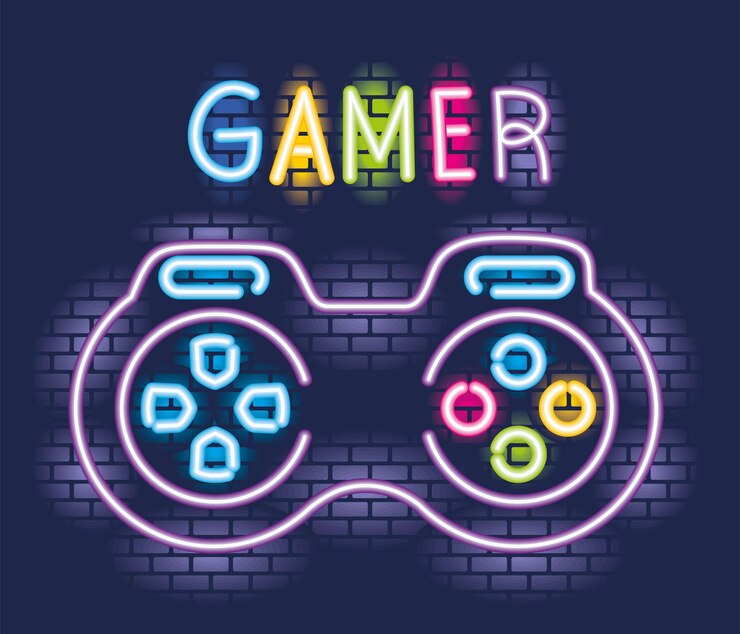When you see the iconic PlayStation logo, what comes to mind? Is it the nostalgia of your first console, the anticipation of groundbreaking games, or the symbol of a brand that revolutionized the gaming industry? Over the years, the PlayStation logo has become more than just a piece of graphic design—it’s a cultural icon. This post dives into the evolution of the PlayStation logo, its role in branding and identity, its influence on popular culture, and what lessons graphic designers and brands can learn from it.
The Evolution of the PlayStation Logo
Launched in 1994 by Sony Computer Entertainment, the PlayStation brand shook the gaming world. With the release of the original PlayStation console, Sony introduced not only cutting-edge gaming technology but also an unforgettable logo designed by Manabu Sakamoto. The logo featured a bold “PS” in a 3D-like perspective, with a red “P” sitting atop a yellow and blue “S.” This design was ahead of its time, giving the logo a dynamic, playful, and modern feel.
Since then, the PlayStation logo has remained remarkably consistent, with only minimal updates to its color palette and style across new console generations. For example, the transition from colorful to monochrome branding with the PlayStation 3 signaled a more mature, tech-forward identity for the brand. Yet, the iconic “PS” emblem has always stayed true to its original design, which demonstrates the power of creating a timeless logo.
The Importance of Logos in Branding and Identity
Logos are much more than visual representations; they are essential building blocks of a brand’s identity. Particularly in the gaming industry, where passion and loyalty run deep, logos serve as instant markers of quality, memorability, and emotional connection. For PlayStation, the logo communicates innovation, entertainment, and reliability to millions of gamers around the world.
Consider the competitive gaming landscape. Sony’s rivals, like Xbox and Nintendo, also feature distinctive logos. However, much of PlayStation’s global appeal stems from its unwavering branding consistency, which strengthens consumer trust and loyalty. Logos like PlayStation’s provide instant recognition and encapsulate what a brand stands for.
Breaking Down the PlayStation Logo
What makes the PlayStation logo such a design masterpiece? Here are the key elements:
- Typography: The rounded, custom-designed “PS” letters add a sense of approachability and creativity, while their geometric simplicity ensures versatility across digital and print platforms.
- Color Palette: Originally, the logo’s red, yellow, and blue colors suggested playfulness and energy, resonating with its younger audience in the ’90s. The shift to monochrome in later iterations reflected a more sophisticated, sleek brand image in line with advancing gaming technology.
- Perspective: The 3D effect of the logo symbolized depth, dimension, and immersion—concepts that aligned perfectly with the groundbreaking nature of the first PlayStation console.
These elements come together to make a logo that feels both timeless and modern.
Impact on Popular Culture and the Fan Community
The PlayStation logo isn’t just emblematic of a gaming console—it represents an entire culture. From online communities to tournaments, PlayStation fans proudly display the logo on merchandise, social media, and even tattoos. The loyalty tied to this logo comes from PlayStation’s ability to deliver innovative and emotionally resonant gaming experiences.
During PlayStation product announcements at major events like E3 or PlayStation Showcase, the mere appearance of the logo on screen generates enthusiasm and anticipation. This illustrates how PlayStation has built an identity that resonates deeply with its community.

The Role of Logos in Shaping Consumer Perceptions
The PlayStation logo does more than inspire nostalgia—it influences purchasing decisions. A successful logo like PlayStation’s indicates brand trustworthiness and quality. When gamers see the PlayStation logo on a product, it signals reliability, cutting-edge technology, and an unrivaled entertainment experience. This level of brand equity doesn’t happen overnight; it’s the result of decades of delivering consistent value to consumers.
Case Studies: Successful Rebranding and Logo Redesigns
While PlayStation has remained loyal to its original logo design, subtle changes have kept it relevant. For example, the switch to a sleek monochrome logo during the PlayStation 3 era was not only a stylistic update but a way to signal the console’s power and serious gaming focus.
Other brands have also navigated successful rebranding. One notable case is Microsoft’s Xbox, which reimagined its branding to emphasize community and inclusivity with simplified, streamlined designs. Another powerful example is Nintendo, whose playful red-and-white logo embodies its family-friendly, imaginative ethos. Like PlayStation, these brands understand the importance of aligning logo design with their broader brand stories.
Tips for Designing a Memorable Logo
What lessons can graphic designers and branding professionals take from the PlayStation logo? Here are some practical tips:
- Keep It Timeless and Simple: Avoid trends that feel gimmicky; focus on clean, versatile design.
- Align with Brand Values: Ensure your logo embodies the core qualities your brand represents, whether that’s innovation, playfulness, or sophistication.
- Adaptability: A great logo should work in various formats, including social media, print, and merchandise.
- Distinction: Your design should stand out from competitors, much like PlayStation’s identifiable “PS” emblem does in the gaming world.
- Consistency: Stick to your logo and branding long enough to embed it into public memory.
Graphic designers can apply these principles to craft logos with enduring appeal and strong brand alignment.
What’s Next for the PlayStation Logo?
As the gaming industry continues to evolve, so must branding. Speculation surrounds the potential future iterations of the PlayStation logo. Will it incorporate dynamic animation for virtual reality platforms? Could it adapt augmented reality or interactive elements? While the exact future of the PlayStation logo is uncertain, one thing remains clear—its ability to connect with audiences is unparalleled.
Share Your Thoughts on the PlayStation Logo
What does the PlayStation logo mean to you? Did you notice its subtle changes over the years? Share your thoughts in the comments or tag us on social media using #PlayStationLogo. Whether you’re a designer, gamer, or branding enthusiast, we’d love to hear how this iconic emblem has impacted you.
